Climate Change is Due to Shifts in Solar Orbit, Not Human Activity: Past NASA Study Showed
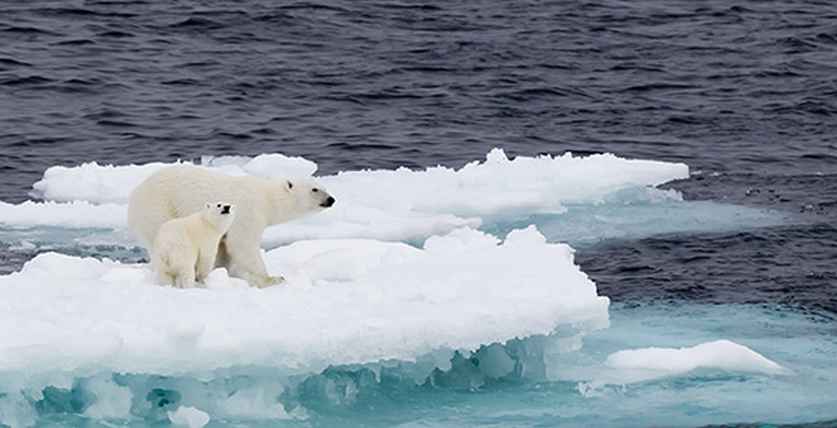
The debate about climate change has been going on for decades. Everyone agrees there is climate change. The bone of contention is about what is causing it. Most scientists believe climate change is caused by human activity. Others don’t. There were even 18 spectacularly wrong predictions made around the time of first Earth Day in 1970, that turned out to be wrong. Is it possible that our sun may be playing a role in climate change?
A new unearthed report published by NASA on March 24, 2000, found that Sun has been the main factor behind changes in the Earth’s climate over the past 1,000 years. According to the report, climate change is caused due to shifts in solar orbit.
“As the axial tilt increases, the seasonal contrast increases so that winters are colder and summers are warmer in both hemispheres,” the report said.
Orbital Variations
Changes in orbital eccentricity affect the Earth-sun distance. Currently, a difference of only 3 percent (5 million kilometers) exists between closest approach (perihelion), which occurs on or about January 3, and furthest departure (aphelion), which occurs on or about July 4. This difference in distance amounts to about a 6 percent increase in incoming solar radiation (insolation) from July to January. The shape of the Earth’s orbit changes from being elliptical (high eccentricity) to being nearly circular (low eccentricity) in a cycle that takes between 90,000 and 100,000 years. When the orbit is highly elliptical, the amount of insolation received at perihelion would be on the order of 20 to 30 percent greater than at aphelion, resulting in a substantially different climate from what we experience today.
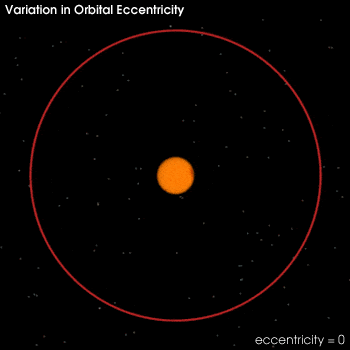
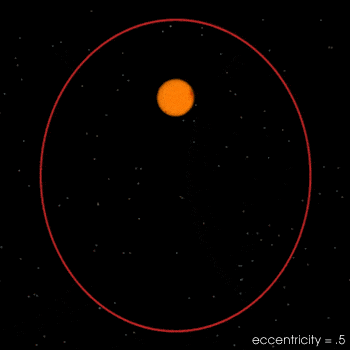
Obliquity (change in axial tilt)
As the axial tilt increases, the seasonal contrast increases so that winters are colder and summers are warmer in both hemispheres. Today, the Earth’s axis is tilted 23.5 degrees from the plane of its orbit around the sun. But this tilt changes. During a cycle that averages about 40,000 years, the tilt of the axis varies between 22.1 and 24.5 degrees. Because this tilt changes, the seasons as we know them can become exaggerated. More tilt means more severe seasons—warmer summers and colder winters; less tilt means less severe seasons—cooler summers and milder winters. It’s the cool summers that are thought to allow snow and ice to last from year-to-year in high latitudes, eventually building up into massive ice sheets. There are positive feedbacks in the climate system as well, because an Earth covered with more snow reflects more of the sun’s energy into space, causing additional cooling.
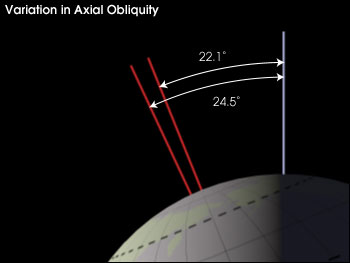
Precession
Changes in axial precession alter the dates of perihelion and aphelion, and therefore increase the seasonal contrast in one hemisphere and decrease the seasonal contrast in the other hemisphere.
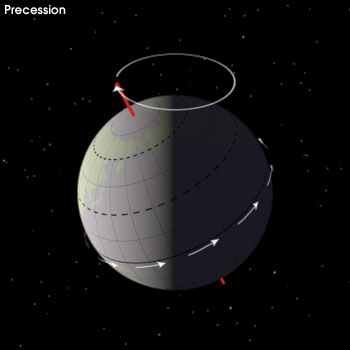
The Milankovitch Climate Theory also shows the tilt of the Earth’s axis along with changes in the solar orbit is the cause of change in climate — not factors surrounding human activity.
Milutin Milankovitch
Using these three orbital variations, Milankovitch was able to formulate a comprehensive mathematical model that calculated latitudinal differences in insolation and the corresponding surface temperature for 600,000 years prior to the year 1800. He then attempted to correlate these changes with the growth and retreat of the Ice Ages. To do this, Milankovitch assumed that radiation changes in some latitudes and seasons are more important to ice sheet growth and decay than those in others. Then, at the suggestion of German Climatologist Vladimir Koppen, he chose summer insolation at 65 degrees North as the most important latitude and season to model, reasoning that great ice sheets grew near this latitude and that cooler summers might reduce summer snowmelt, leading to a positive annual snow budget and ice sheet growth.

But, for about 50 years, Milankovitch’s theory was largely ignored. Then, in 1976, a study published in the journal Science examined deep-sea sediment cores and found that Milankovitch’s theory did in fact correspond to periods of climate change (Hays et al. 1976). Specifically, the authors were able to extract the record of temperature change going back 450,000 years and found that major variations in climate were closely associated with changes in the geometry (eccentricity, obliquity, and precession) of Earth’s orbit. Indeed, ice ages had occurred when the Earth was going through different stages of orbital variation.
Since this study, the National Research Council of the U.S. National Academy of Sciences has embraced the Milankovitch Cycle model.
…orbital variations remain the most thoroughly examined mechanism of climatic change on time scales of tens of thousands of years and are by far the clearest case of a direct effect of changing insolation on the lower atmosphere of Earth (National Research Council, 1982).

